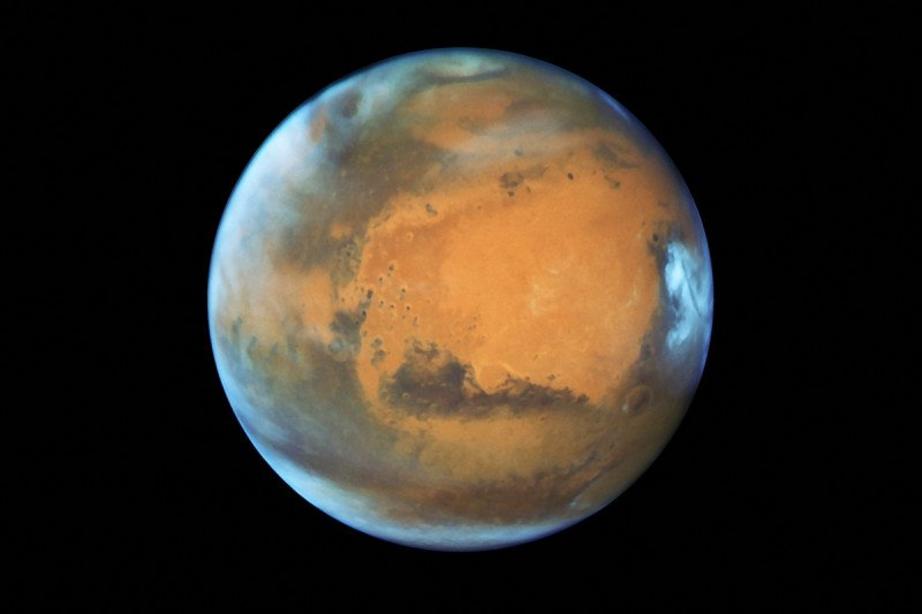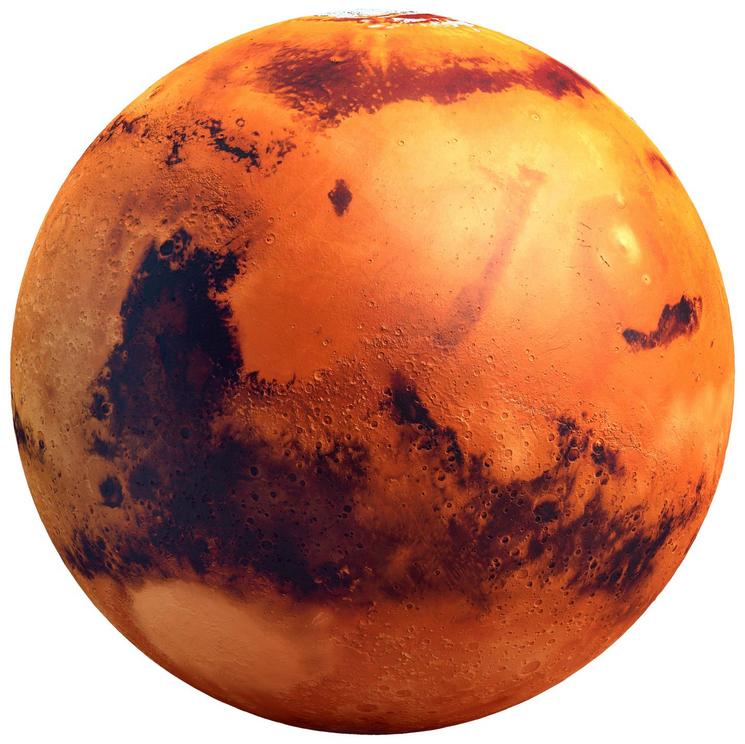Ice at Mars’s equator hints the planet was once much more tilted
Much of the water on Mars isn’t where we thought. There is more of the wet stuff far from Mars’s poles than expected, indicating that the whole planet may have once been tilted at a greater angle than it is now.
Jack Wilson at Durham University in the UK and his colleagues were able to enhance images from NASA’s Mars Odyssey orbiter to take a closer look for water on the Martian surface and just under it.
“It was as though we took the spacecraft and lowered altitude by half, so we saw a few new things on the surface that weren’t visible before,” Wilson says.
They found more water in the planet’s equatorial regions than previous studies suggested should be there. They also found that a patch of what we thought was buried water-ice is actually a volcanic plain, and formations that looked like evidence of flooding might be dry landslides instead.
 Tilt your head 45 degrees. That’s how mars might have looked
Tilt your head 45 degrees. That’s how mars might have looked
Fresh water
Odyssey can’t detect water directly, but it can detect hydrogen. Because there are not many other sources of large amounts of hydrogen on Mars, detecting hydrogen is a good proxy for water. On the flanks of three ancient volcanoes in Mars’s equatorial region, Odyssey found the planet’s surface was 10 to 40 percent hydrogen by weight.
“We knew in the past there was buried ice close to the poles,” Wilson says. “We saw there are also small patches near the equator.”
Atmospheric pressure on the Red Planet averages about 0.6 percent of Earth’s, so water above freezing temperature will evaporate. Equatorial Mars regularly reaches such temperatures, so if the region has ice patches, that implies it was cooler there in the past.
To account for this, Mars would have had to be tilted on its axis by about 45 degrees sometime in the last few million years – around 20 degrees more than its current tilt.
Disappointingly dry
While some parts of Mars were surprisingly wet, there are other areas where water was expected, but didn’t show up in the Odyssey data.
In 2005, scientists examining pictures of a region near the equator thought it resembled structures seen in Antarctica, indicating that there were ice formations under the surface. But the Odyssey data showed less hydrogen there than surrounding areas, and a lot of iron, so it could be a lava plain.
This result may also cast some light on recurring slope lineae, dark streaks on the Martian surface that look like they were carved out by water. There isn’t enough hydrogen in and near those formations for them to be completely watery, so they be smaller aquifers rather than large melts or even dry landslides.
Wilson cautions that Odyssey’s instruments are not capable of detecting certain water-ice deposits, because they are buried under metres of dust. Equally, the hydrogen it detects could come from other compounds, like chlorine, that are present on Mars’s surface.
Michael Mischna, a planetary scientist at NASA’s Jet Propulsion Laboratory, takes issue with some of the new findings that conflict with previous results from NASA’s Mars Curiosity rover. “Frankly I trust [Curiosity] results more than [Mars Odyssey], simply because that’s the ground truth,” he says.
Journal reference: Icarus, DOI: 10.1016/j.icarus.2017.07.028

